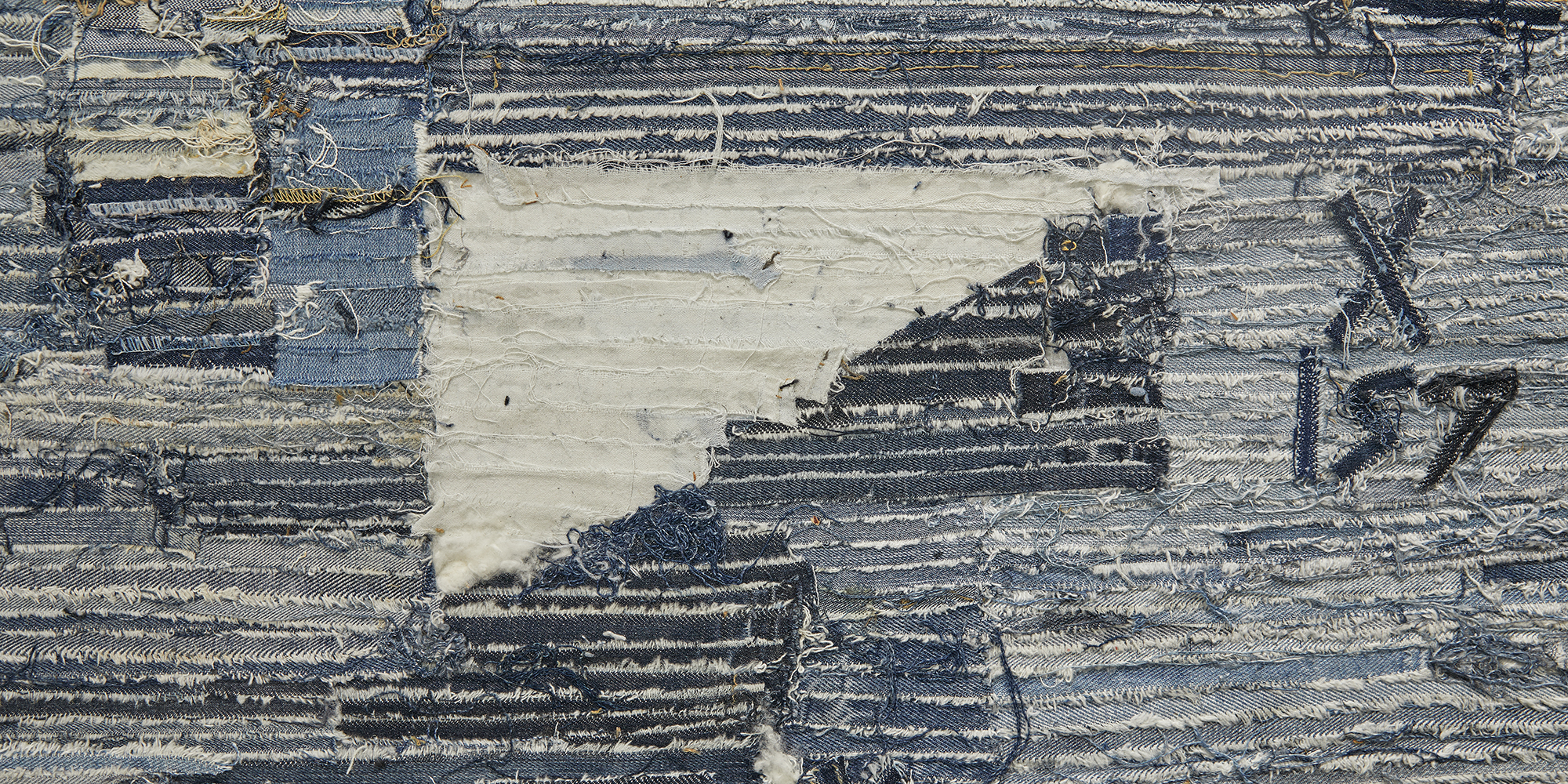Jamal Cyrus

Jamal Cyrus
River Bends to Gulf (Double Time), 2021 (detail)
Denim and cotton thread
73 x 110 1/2 inches
Photo by Allyson Huntsman
- March 29, 2022 6:00 PM
River Bends to Gulf (Double Time) is a meditation on the city of New Orleans as a sonic territory, and speculates on the flow of the river, and what was shipped up and down it, as a direct influence on the musical culture of the area. I am exploring the idea that there are cities with crossroads of waterways and as we know crossroads has an important place within the cultures of the African Diaspora. Jamal Cyrus
Artist Jamal Cyrus, in conjunction with FOCUS: Jamal Cyrus, presents the trajectory of his research-driven approach to artmaking that explores ignored, forgotten, and fragmented accounts of Black American culture. He focuses here on what he terms the “sonic territory,” which considers the influences that cultural interaction, labor, wildlife, landscape, and geology have on the musical culture of the Dallas/Fort Worth area. As a multidisciplinary artist, Cyrus explores gaps in Black American history, striving to better understand cultural and national heritage in the context of Black political movements, social justice issues, and the influence of the African diaspora. He explains, “I see my work as a form of self-education. Due to the illegality of teaching the enslaved to read and write, and the subsequent lack of access to education following Emancipation and well into the middle of the 20th century, the action of teaching oneself has a long history within Black culture.”
Jamal Cyrus received his BFA from the University of Houston, attended the Skowhegan School of Painting and Sculpture, and received an MFA from the University of Pennsylvania. He has won awards including the Louis Comfort Tiffany Foundation Award, Artadia Houston Award, Smithsonian Artist Research Fellowship, Joan Mitchell award, and Driskell Prize, awarded by the High Museum of Art, Atlanta. Cyrus was also a member of the artist collective Otabenga Jones and Associates, which, among other significant exhibitions, was included in the 2006 Whitney Biennial.
This popular series of lectures and presentations by artists, architects, historians, and critics is free and open to the public. Lectures begin at 6 pm in the Modern’s auditorium. Seating is at 5:30 pm. Due to Covid-19 procedures, seating is limited to a reduced number of in-person guests this season. A livestream broadcast of the lecture will be available here.
A limited number of tickets (limit two per person) will be available for purchase ($5) from 10 am until 3 pm the day of the lecture online. Free admission tickets (limit two per person) are available at the Modern’s information desk beginning at 4 pm on the day of the lecture.
Museum galleries will close at 6 pm. Café Modern’s bar is open until 6 pm (no food service available.) Lectures will not be broadcast into the café this season.
The Tuesday Evenings at the Modern Lecture Series is made possible with funding from Humanities Texas and the National Endowment for the Humanities (NEH) as part of the federal ARP Act.
